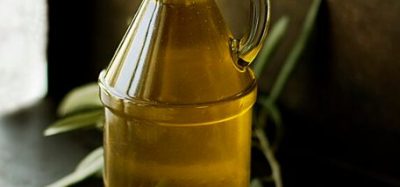Trans fats in foods and the commercial challenges
- Like
- Digg
- Del
- Tumblr
- VKontakte
- Buffer
- Love This
- Odnoklassniki
- Meneame
- Blogger
- Amazon
- Yahoo Mail
- Gmail
- AOL
- Newsvine
- HackerNews
- Evernote
- MySpace
- Mail.ru
- Viadeo
- Line
- Comments
- Yummly
- SMS
- Viber
- Telegram
- Subscribe
- Skype
- Facebook Messenger
- Kakao
- LiveJournal
- Yammer
- Edgar
- Fintel
- Mix
- Instapaper
- Copy Link
Posted: 28 August 2013 | M. S. Alam Head of Fats and Oils Program, Food Protein R&D Center, Texas A&M University | No comments yet
Fats and oils are major sources of energy, providing nine kilocalories per gram compared to carbohydrates and proteins which provide only four kilocalories per gram and 3.8 kcal/g of energy, respectively. The two major sources of edible fats and oils are plants and animals. Plant sources or vegetable oils are found in abundance in seeds and fruits such as soybeans, cottonseeds, canola, sunflower, corn, peanuts, palm, palm kernels and coconut oil. The major animal fats include lards from pigs, tallow from cattle and sheep, milk fat from cows and fish oil.
The major component of most oils and fatty foods are triglycerides (95 – 98 per cent) represented as TAG whereas the fatty acids such as stearic acid (C18:0), oleic acid (C18:1), linoleic (C18:2), linolenic (C18:3), C16:0 (palm oil) and C12:0 (coconut oil) are the major building blocks of TAG. For example, in Figure 1, the TAG molecule is composed of a glycerol molecule. Attached to it are three different fatty acids, C16:0, C18:1 and C18:3. The terms mono unsaturated fatty acids (MUFA’s) and poly unsaturated fatty acids (PUFA’s) are used for fats containing one or more than one double bond. MUFA’s and PUFA’s are considered heart healthy fats if consumed in a balanced manner. Olive, soybean, canola, sunflower and cottonseed oil contain considerable amounts of MUFA’s and PUFA’s. Omega-3 fats are from the PUFA family and commonly found in most nuts (almond, cashew, walnut etc.) in fatty fishes and in plant oils such as flaxseed oil. Consuming omega-3 fats protects the consumer from heart disease and decreases the risk of many lifethreatening diseases such as diabetes and cancer.
Fats and oils are major sources of energy, providing nine kilocalories per gram compared to carbohydrates and proteins which provide only four kilocalories per gram and 3.8 kcal/g of energy, respectively. The two major sources of edible fats and oils are plants and animals. Plant sources or vegetable oils are found in abundance in seeds and fruits such as soybeans, cottonseeds, canola, sunflower, corn, peanuts, palm, palm kernels and coconut oil. The major animal fats include lards from pigs, tallow from cattle and sheep, milk fat from cows and fish oil. The major component of most oils and fatty foods are triglycerides (95 – 98 per cent) represented as TAG whereas the fatty acids such as stearic acid (C18:0), oleic acid (C18:1), linoleic (C18:2), linolenic (C18:3), C16:0 (palm oil) and C12:0 (coconut oil) are the major building blocks of TAG. For example, in Figure 1, the TAG molecule is composed of a glycerol molecule. Attached to it are three different fatty acids, C16:0, C18:1 and C18:3. The terms mono unsaturated fatty acids (MUFA’s) and poly unsaturated fatty acids (PUFA’s) are used for fats containing one or more than one double bond. MUFA’s and PUFA’s are considered heart healthy fats if consumed in a balanced manner. Olive, soybean, canola, sunflower and cottonseed oil contain considerable amounts of MUFA’s and PUFA’s. Omega-3 fats are from the PUFA family and commonly found in most nuts (almond, cashew, walnut etc.) in fatty fishes and in plant oils such as flaxseed oil. Consuming omega-3 fats protects the consumer from heart disease and decreases the risk of many lifethreatening diseases such as diabetes and cancer.
Fats and oils are major sources of energy, providing nine kilocalories per gram compared to carbohydrates and proteins which provide only four kilocalories per gram and 3.8 kcal/g of energy, respectively. The two major sources of edible fats and oils are plants and animals. Plant sources or vegetable oils are found in abundance in seeds and fruits such as soybeans, cottonseeds, canola, sunflower, corn, peanuts, palm, palm kernels and coconut oil. The major animal fats include lards from pigs, tallow from cattle and sheep, milk fat from cows and fish oil.
The major component of most oils and fatty foods are triglycerides (95 – 98 per cent) represented as TAG whereas the fatty acids such as stearic acid (C18:0), oleic acid (C18:1), linoleic (C18:2), linolenic (C18:3), C16:0 (palm oil) and C12:0 (coconut oil) are the major building blocks of TAG. For example, in Figure 1, the TAG molecule is composed of a glycerol molecule. Attached to it are three different fatty acids, C16:0, C18:1 and C18:3. The terms mono unsaturated fatty acids (MUFA’s) and poly unsaturated fatty acids (PUFA’s) are used for fats containing one or more than one double bond. MUFA’s and PUFA’s are considered heart healthy fats if consumed in a balanced manner. Olive, soybean, canola, sunflower and cottonseed oil contain considerable amounts of MUFA’s and PUFA’s. Omega-3 fats are from the PUFA family and commonly found in most nuts (almond, cashew, walnut etc.) in fatty fishes and in plant oils such as flaxseed oil. Consuming omega-3 fats protects the consumer from heart disease and decreases the risk of many lifethreatening diseases such as diabetes and cancer.








